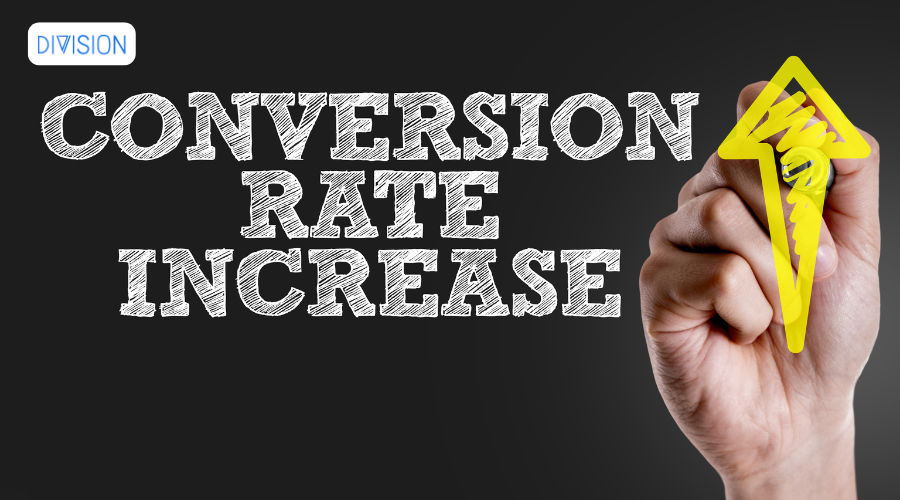In the digital age, having a robust online presence is crucial for any business, and Division Web Design understands this well. While content quality and backlinks are essential, the backbone of a successful website lies in its technical SEO. Advanced technical SEO techniques ensure that your website is user-friendly and ranks high on search engine results pages (SERPs). This comprehensive guide will walk you through the most effective technical SEO techniques to optimize your website.
Understanding Technical SEO
Technical SEO refers to optimizing your website’s infrastructure to make it easier for search engines to crawl, index, and rank it. This involves various backend improvements that enhance website performance, user experience, and visibility on SERPs. Let’s dive into the key technical SEO techniques that can transform your website’s performance.
1. Website Speed Optimization
Importance of Website Speed
Website speed is a critical factor in both user experience and SEO. A slow-loading website can frustrate users and increase bounce rates, negatively impacting your search rankings. Studies have shown that even a one-second delay in page load time can lead to a significant drop in conversions. Therefore, optimizing your website’s speed is essential to keep users engaged and improve your SEO performance.
Techniques to Improve Website Speed
- Minimize HTTP Requests: Reduce the number of elements on your page to decrease load times. Each element on your webpage, such as images, scripts, and stylesheets, requires an HTTP request, which can slow down your site.
- Optimize Images: Compress images without sacrificing quality. Tools like TinyPNG and ImageOptim can help reduce the file size of your images, ensuring faster load times.
- Leverage Browser Caching: Store static files on users’ browsers to reduce load times for repeat visitors. This means that when users return to your site, their browser can load the page faster by reusing previously downloaded resources.
- Use a Content Delivery Network (CDN): Distribute content across multiple servers to ensure faster delivery to users globally. A CDN can significantly reduce latency and improve load times, especially for geographically distant users from your server.
2. Mobile Optimization
Mobile-First Indexing
Google’s shift to mobile-first indexing means that the mobile version of your website is now the primary version indexed. Ensuring your site is mobile-friendly is crucial for SEO. With more people accessing the internet via mobile devices, a mobile-optimized website can enhance user experience and boost your search engine rankings.
Techniques for Mobile Optimization
- Responsive Design: Ensure your website adapts to different screen sizes. A responsive design provides a seamless experience across all devices, enhancing user satisfaction and retention.
- Accelerated Mobile Pages (AMP): Implement AMP to create faster mobile pages. AMP is an open-source initiative that enables you to create web pages that load almost instantly on mobile devices.
- Mobile-Friendly Navigation: Simplify navigation menus and use touch-friendly elements. Ensure that buttons and links are easily tappable and that users can navigate your site effortlessly on their mobile devices.
3. Secure Your Website with HTTPS
Importance of HTTPS
Google prioritizes secure websites in its rankings. HTTPS encrypts data, providing a safer browsing experience for users. A secure website not only protects user data but also builds trust and credibility with your audience.
How to Implement HTTPS
- Obtain an SSL Certificate: Purchase and install an SSL certificate from a trusted provider. Many web hosting providers offer SSL certificates as part of their packages.
- Redirect HTTP to HTTPS: Set up 301 redirects to ensure all traffic is directed to the secure version of your site. This helps maintain your search rankings and ensures that users always access the secure version of your site.
- Update Links: Ensure all internal links and references use HTTPS. This includes updating links in your content, navigation, and any external resources you may use.
4. Structured Data Markup
What is Structured Data?
Structured data helps search engines understand the content of your pages. Implementing schema markup can enhance your site’s visibility with rich snippets. Rich snippets can provide users with additional information, such as ratings, reviews, and event details, directly on the search results page.
How to Use Structured Data
- Identify Opportunities: Use schema.org to find relevant schemas for your content. Whether you have a local business, an e-commerce site, or a blog, there are schemas available to highlight your content in search results.
- Implement Schema Markup: Add structured data to your HTML using JSON-LD format. JSON-LD is a JavaScript notation that is easy to implement and maintain.
- Test Your Markup: Use Google’s Structured Data Testing Tool to ensure correct implementation. This tool helps you verify that your structured data is correctly formatted and provides a preview of how it will appear in search results.
5. XML Sitemaps and Robots.txt
Importance of XML Sitemaps
An XML sitemap helps search engines understand the structure of your website and find new content. It serves as a roadmap for search engines, guiding them to all the important pages on your site.
How to Create and Submit an XML Sitemap
- Generate a Sitemap: Use tools like Yoast SEO or XML-Sitemaps.com to generate an XML sitemap. These tools can automatically update your sitemap as you add or remove content from your site.
- Submit to Search Engines: Submit your sitemap through Google Search Console and Bing Webmaster Tools. This helps search engines discover and index your content more efficiently.
Optimizing Robots.txt
The robots.txt file tells search engines which pages to crawl and index. Ensure this file is correctly configured to prevent accidental blocking of important pages.
- Block Non-Essential Pages: Use robots.txt to block search engines from crawling unnecessary pages, such as admin pages, thank you pages, and duplicate content.
- Allow Essential Resources: Ensure that essential resources, such as CSS and JavaScript files, are not blocked by robots.txt. Search engines need access to these resources to understand your site’s layout and functionality.
6. Optimize Your URL Structure
Importance of URL Structure
A clean and descriptive URL structure enhances user experience and makes it easier for search engines to understand your site’s hierarchy. Well-structured URLs can improve your site’s crawlability and indexing.
Techniques for Optimizing URLs
- Use Keywords: Include relevant keywords in your URLs. This helps search engines understand the content of your pages and can improve your rankings for those keywords.
- Avoid Special Characters: Use hyphens instead of underscores and avoid special characters. Hyphens are preferred by search engines and make URLs more readable for users.
- Keep It Short and Simple: Ensure URLs are concise and easy to read. Shorter URLs are more user-friendly and are more likely to be shared and remembered.
7. Canonicalization
What is Canonicalization?
Canonicalization prevents duplicate content issues by specifying the preferred version of a webpage. Duplicate content can confuse search engines and dilute your site’s authority.
How to Implement Canonical Tags
- Identify Duplicate Content: Use tools like Screaming Frog to find duplicate pages. Duplicate content can occur due to various reasons, such as different URL parameters or printer-friendly versions of pages.
- Add Canonical Tags: Use the
<link rel="canonical">tag to point to the preferred version of the page. This helps search engines understand which version of the page to index and rank. - Test Your Implementation: Verify the correct pages are marked as canonical using Google Search Console. This ensures that search engines are correctly recognizing the canonical versions of your pages.
8. Internal Linking Strategy
Importance of Internal Linking
Internal links help distribute link equity across your site, improve user navigation, and enhance the crawlability of your pages. An effective internal linking strategy can boost your SEO by highlighting important pages and making it easier for search engines to discover and index your content.
Best Practices for Internal Linking
- Use Descriptive Anchor Text: Ensure anchor text is relevant to the linked page. Descriptive anchor text provides context to users and search engines about the content of the linked page.
- Link to High-Value Pages: Prioritize linking to pages you want to rank higher. Internal links to high-value pages can pass link equity and improve their rankings.
- Maintain a Logical Structure: Organize links in a way that mimics your site’s hierarchy. A logical structure helps both users and search engines navigate your site more effectively.
9. Fix Crawl Errors
Identifying Crawl Errors
Crawl errors can prevent search engines from indexing your site properly. Use tools like Google Search Console to identify these issues. Regularly monitoring crawl errors ensures that your site remains accessible to search engines.
How to Fix Common Crawl Errors
- 404 Errors: Redirect broken links to relevant pages or your homepage. This helps maintain a positive user experience and ensures that search engines do not encounter dead ends.
- Server Errors: Ensure your server is properly configured and has sufficient resources. Server errors can prevent search engines from accessing your site, so it’s important to address them promptly.
- Blocked Resources: Update your robots.txt file to allow search engines to access essential files. Blocking essential resources can hinder search engines from rendering and indexing your site properly.
10. Optimize for Core Web Vitals
What are Core Web Vitals?
Core Web Vitals are a set of metrics related to speed, responsiveness, and visual stability, crucial for user experience and SEO. Google considers these metrics as part of its ranking algorithm, making them essential for SEO optimization.
How to Improve Core Web Vitals
- Largest Contentful Paint (LCP): Optimize server response times and improve resource loading. LCP measures how long it takes for the largest content element on your page to become visible to users.
- First Input Delay (FID): Minimize JavaScript execution and improve input responsiveness. FID measures the time it takes for your site to respond to the first user interaction.
- Cumulative Layout Shift (CLS): Use size attributes for images and videos to prevent layout shifts. CLS measures visual stability and ensures that elements on your page do not move unexpectedly during loading.
Technical vs On-Page vs Off-Page SEO: What’s the Difference?
| Aspect | Technical SEO | On-Page SEO | Off-Page SEO |
|---|---|---|---|
| Focus | Website infrastructure and performance | Content and HTML source code | External signals and backlinking |
| Key Elements | Site speed, mobile-friendliness, security (SSL), crawlability | Keywords, meta tags, headers, internal linking | Backlinks, social media signals, online reputation |
| Goal | Ensure search engines can crawl and index the site effectively | Optimize individual pages to rank higher in search results | Increase domain authority and website credibility |
| Examples | XML sitemaps, robots.txt, HTTPS, structured data | Content quality, keyword usage, meta descriptions | Link building, influencer outreach, social media engagement |
| Impact | Backend, foundational impact on SEO performance | Direct impact on how search engines interpret content | Enhances site authority and popularity |
Contact Us
For more personalized assistance with advanced technical SEO techniques, contact Division Web Design. Our team of experts is dedicated to helping you optimize your website and achieve higher rankings on search engines. Reach out to us at:
- Phone: 732.943.1010
- Email: sham@division.design








